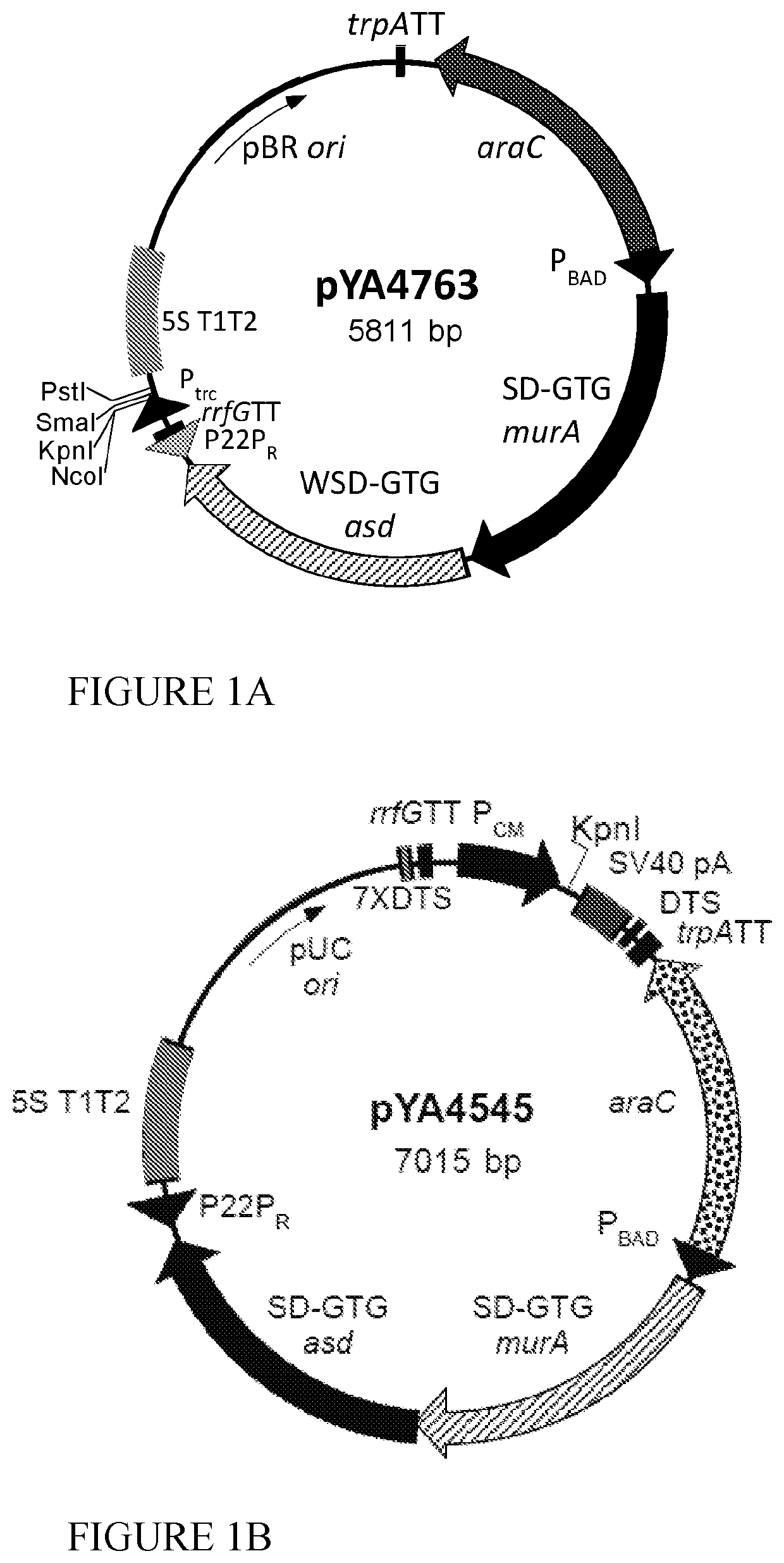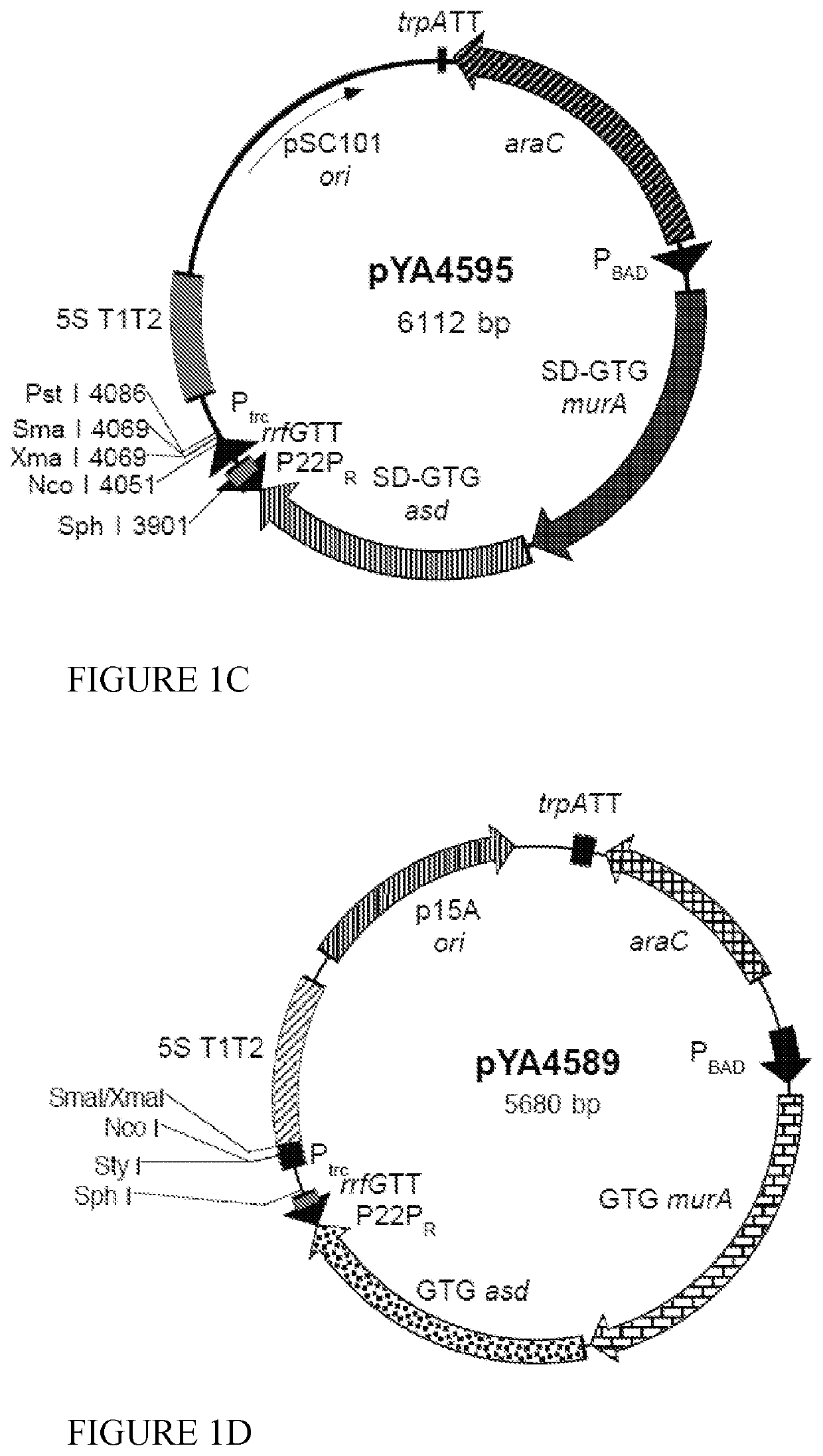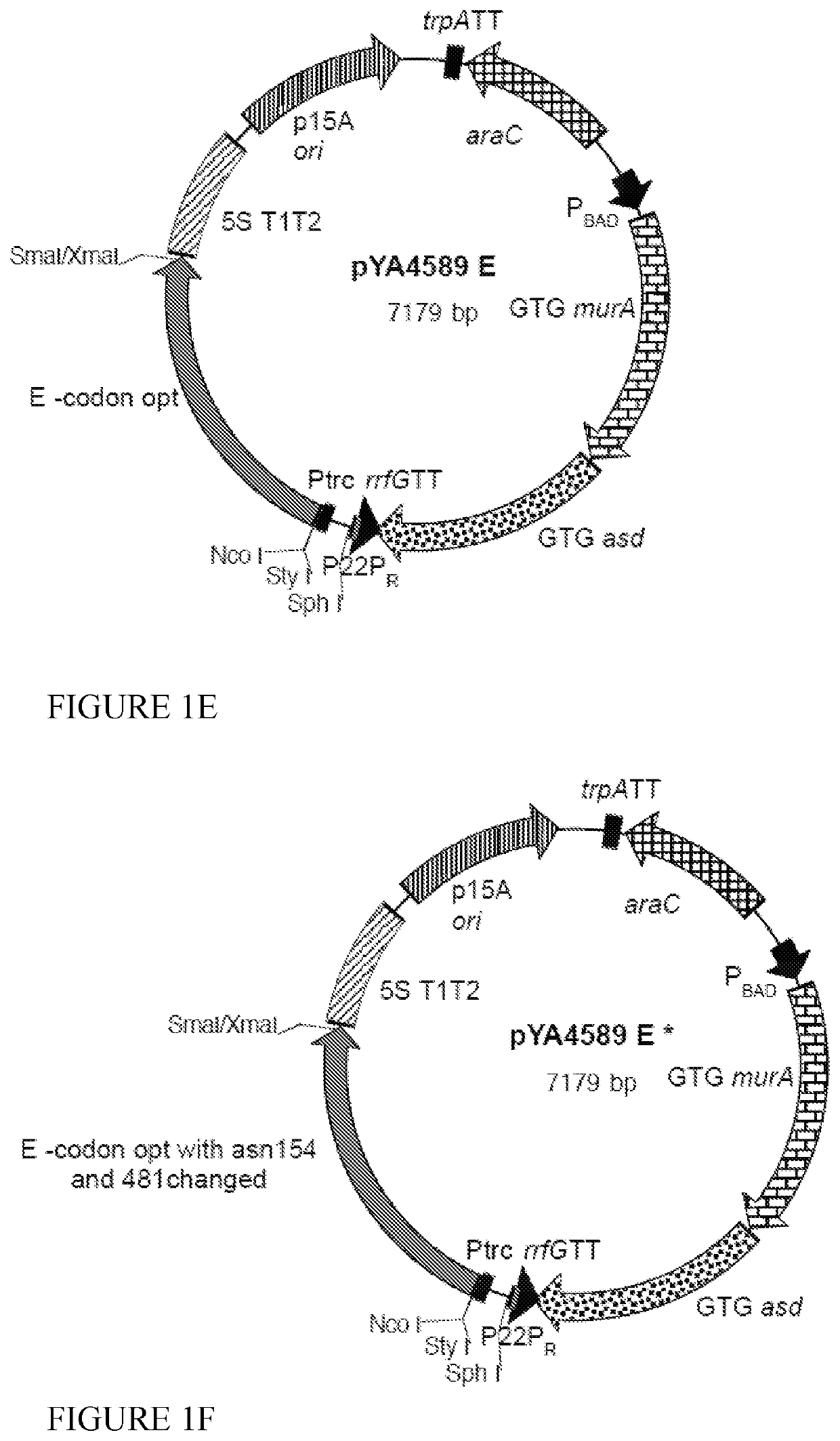Protective anti-ZIKV vaccine without inducing cross-reactions with dengue
a technology of dengue and vaccine, which is applied in the direction of dna/rna vaccination, antibody medical ingredients, peptide sources, etc., can solve the problems of complicating the development of safe, effective vaccine to prevent, and the potential of flavivirus, so as to induce protective immune responses, induce mucosal and systemic antibody responses, and efficiently coloniz
- Summary
- Abstract
- Description
- Claims
- Application Information
AI Technical Summary
Benefits of technology
Problems solved by technology
Method used
Image
Examples
example 1
l Overview for Constructions and Evaluations
[0081]RASVs delivering DNA vaccine vectors and RASVs synthesizing protein antigen from antigen-encoding lysis vectors will be produced as described above in the “Strain characterization” section. Five RASVs delivering ZIKV DNA vaccines, a vector control and a buffered saline control will be administered to groups of female BALB / c mice (10 animals per group). The immunization protocol comprises orally administering 109 CFU on days 0, 7, and 49 and a repeat experiment of a longer duration that uses the same or a lower dose will be also be performed before giving the booster immunization. Sera will be collected on days −1, 14, 28, 42, 56, and 70. Mucosal and serum antibody titers to each of the three ZIKV surface antigens and to Salmonella LPS and OMPs will be determined using ELISA. Neutralizing antibody titers against ZIKV and DENV types 1-4 will be determined via virus neutralization assays.
[0082]At 70 days, mice will be euthanized and per...
example 2
ion of Lysis Vectors Encoding NS Proteins
[0085]We inserted the codon optimized sequences for NS4A and NS4B (lower sequences in FIGS. 11 and 12) into the pYA4589 (p15A ori) vector (FIG. 1D) to yield pG8R124 (FIG. 13) and pG8R125 (FIG. 14), respectively. However, initially both sequences with a C-terminal 6-His tag, to enable measurement of levels of protein synthesis using the mouse monoclonal poly-histidine antibody clone HIS-1 (Sigma H1029), were inserted into pYA4589 and the sequences encoding the 6-His residues deleted by plasmid digestion with NaeI (see sequences at the bottom of FIGS. 11 and 12). All plasmids were initially electroporated into E. coli K-12 χ6212(pYA232) (F−λ−φ80 Δ(lacZYA-argF) endA1 recA1 hsdR17 deoR thi-1 glnV44 gyrA96 relA1 ΔasdA4 with pYA232 encoding lacIq) with selection for Asd+ in the presence of 0.1% arabinose. Asd+ isolates were tested for presence of the plasmid of the correct size and content and ability to grow in the presence of IPTG to relieve the ...
example 3
ion of Lysis Vectors Encoding prM-E Fusion Protein
[0086]The immune response to the prM-E fusion should result from a combined production of neutralizing antibodies and cellular immunity. Since some cross reactive antibodies might be due to glycosylation, the synthesis and delivery of this fusion protein from Salmonella should eliminate such glycosylation even without alteration of the N-X-S / T glycosylation sites in the E encoding sequence. As in Example 2, the codon-optimized sequence for the prM-E fusion (FIG. 15) with the C-terminal 6-His tag was inserted into pYA4589, which was then electroporated into χ6212(pYA232). The NaeI digested plasmid without the His tag was also electroporated into χ6212(pYA232) and designated pG8R126 (FIG. 16). All of the procedures for plasmid characterization were as described in Example 2 both before and after introducing pG8R126 into χ12341. χ12341(pG8R126) is thus ready for studies in mice as described in the Material and Methods section.
[0087]It s...
PUM
| Property | Measurement | Unit |
|---|---|---|
| cross reactivity | aaaaa | aaaaa |
| cross-reactivity | aaaaa | aaaaa |
| conformational | aaaaa | aaaaa |
Abstract
Description
Claims
Application Information
 Login to View More
Login to View More - R&D
- Intellectual Property
- Life Sciences
- Materials
- Tech Scout
- Unparalleled Data Quality
- Higher Quality Content
- 60% Fewer Hallucinations
Browse by: Latest US Patents, China's latest patents, Technical Efficacy Thesaurus, Application Domain, Technology Topic, Popular Technical Reports.
© 2025 PatSnap. All rights reserved.Legal|Privacy policy|Modern Slavery Act Transparency Statement|Sitemap|About US| Contact US: help@patsnap.com



